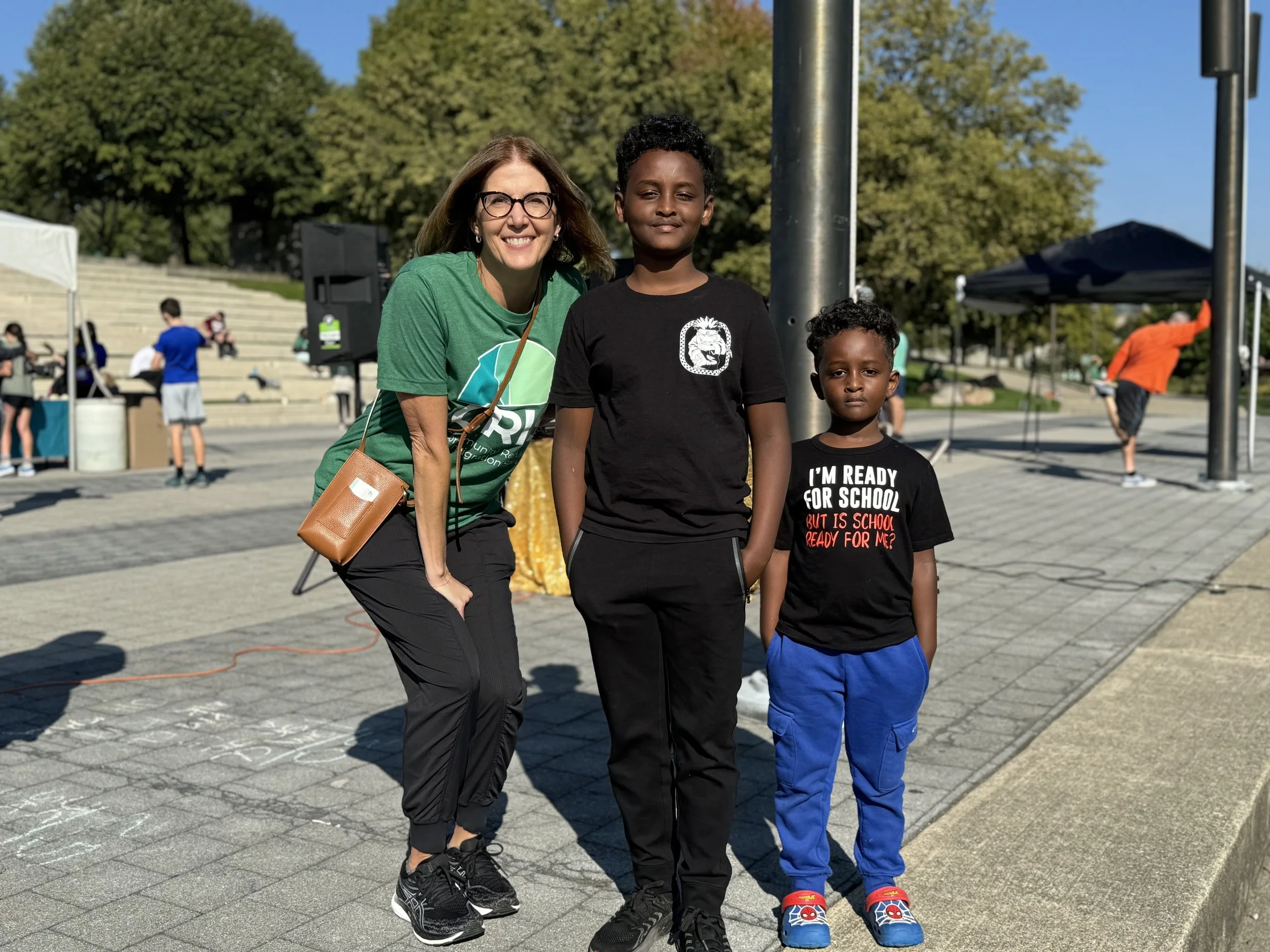The 2024 Election: Reflections from CRIS’ Executive Director, Angie Plummer
The Significance of this Moment
This November 5th marks the seventh presidential election I’ve experienced since I started working with refugees as a member of the CRIS staff in 1999. And while it has always been true that the U.S. President has almost exclusive authority to determine how many refugees can receive life-saving resettlement through the U.S. Refugee Admissions Program (USRAP) each year, bipartisan support for the program meant that while the outcome of an election would shape certain policies, neither presidential candidate represented an existential threat. Candidates for both parties supported our country’s proud tradition of resettling refugees, recognizing the humanitarian and economic value of the program. That changed dramatically with the 2016 election.
Presidents can decide whether to invest time, resources, and political capital into the USRAP, thereby reducing long wait times for refugees and their families. Or a president can decide to implement significant procedural barriers and ban travel altogether by certain nationalities. I have grieved with weeping mothers waiting in agony to be reunited with their children, only to face delay after delay. I have sat across from disheartened husbands and fathers who felt helpless, mourning the milestones they missed sharing with their families. After a change in administration, I have been able to join many families as they are reunited with loved ones at the Columbus airport, often having waited many years for that moment (*more on that below).
Presidents can expand life-saving access to the USRAP for refugees who might not otherwise have protections, providing a pathway to safety. In recent years, special programs have expanded access for refugees from the Democratic Republic of Congo, Afghanistan, Venezuela, and other countries to be resettled in the U.S. CRIS has welcomed hundreds of refugees specifically from these countries and we consider it a privilege to be able to support them as they build new lives in our community. The significance of the outcome of the 2024 election cannot be overstated in terms of the impact it will have on refugee and immigrant communities both here and abroad.
Building and Re-Building
During my tenure at CRIS, Presidents have set resettlement ceilings as high as 125,000 (2022, 2023, 2024) and as low as 18,000 (2020). I have led CRIS as our resettlement program welcomed as many as 1,452 refugees to Central Ohio (2006) and as few as 108 (2020). Since that low point, we have painstakingly rebuilt our infrastructure and can today boast a dedicated team of 120 staff, a dedicated team I’m so honored to lead, serving thousands of individuals each year. And our resettlement program arrivals are back to pre-2016 levels (788 in fiscal year 2024).
The graph below illustrates arrival numbers by month for the past five years. I think the takeaway is that as challenging as it is, we are adaptable, scaling up or down depending on the circumstances to meet the needs at hand.
CRIS’ arrival/resettlement numbers by month, October 2019-September 2024
What Remains the Same
While I know we feel a heightened sense of vulnerability in this time of uncertainty, I take comfort in reflecting on what has endured over the last 25 years:
Our nation maintains a rich history of welcoming refugees and immigrants
The Central Ohio community remains steadfast in its warm welcome of refugees and immigrants
With our supporters' help, CRIS has overcome challenges and continues to adapt to meet current community priorities. Our mission remains intact.
No matter who wins the election, CRIS will be working alongside those we serve to provide:
Safety and Security
This may be a very present/immediate need/reality for refugee and immigrant communities depending on the outcome of the election.
Self-Sufficiency
To the best of our ability/available resources, we will continue to prioritize employing, English language learning, and providing legal services to help those we serve take steps toward achieving or maintaining self-sufficiency
Successful Integration
A key element of successful integration is a deep sense of belonging–that our refugee and immigrant neighbors feel welcomed/wanted/valued as members of our community–not only as the recipients of welcome but as contributors to the fabric of Central Ohio
Holding on to Hope
I want to close by telling you about the picture at the beginning of this message and why it is meaningful to me.
Some of you may remember Afkab, a Somali man (now U.S. citizen) who was part of our #StillNotHere campaign at several of our 5K Run for Refugee events. Afkab had come to the United States as a refugee in 2015. We helped him apply in 2016 to reunite with his wife and infant son, Abdullahi, who were still living in Kenya.
Unfortunately, they (like so many others) were caught up in the delays/restrictions in refugee processing imposed in 2017 by the then new administration. Afkab went to Washington D.C. to advocate. He spoke to media. He spoke at our events. We tried everything to bring attention to their case in the hopes it would make a difference. Missing his family and frustrated with waiting, Afkab traveled to Kenya to visit them and to meet Abdullahi for the first time. During that visit, Afkab’s wife became pregnant with their second child, another boy named Zain.
After extraordinary efforts were made to get all three of them here, including the filing of a federal lawsuit, we finally celebrated Afkab’s family’s arrival in Columbus in July of 2022. They continue to stay connected to CRIS and this photo was of Abdullahi, Zain, and me at this year’s CRIS 5K just a few weeks ago. During those 6+ years that I (and others) worked with Afkab, what stood out for me was that despite the milestones he missed and the frustration he experienced, he never gave up hope. After protracted delays, some family reunifications don’t have a happy ending. But this one did and this picture reminds me of what’s possible when people come together to support one another. And that’s what we’ll keep doing.


